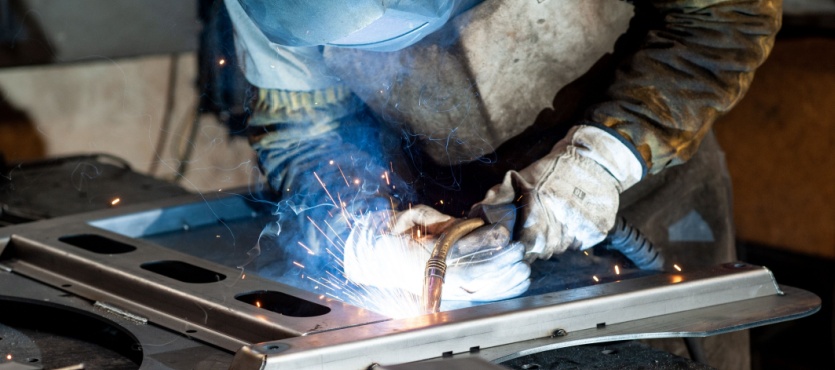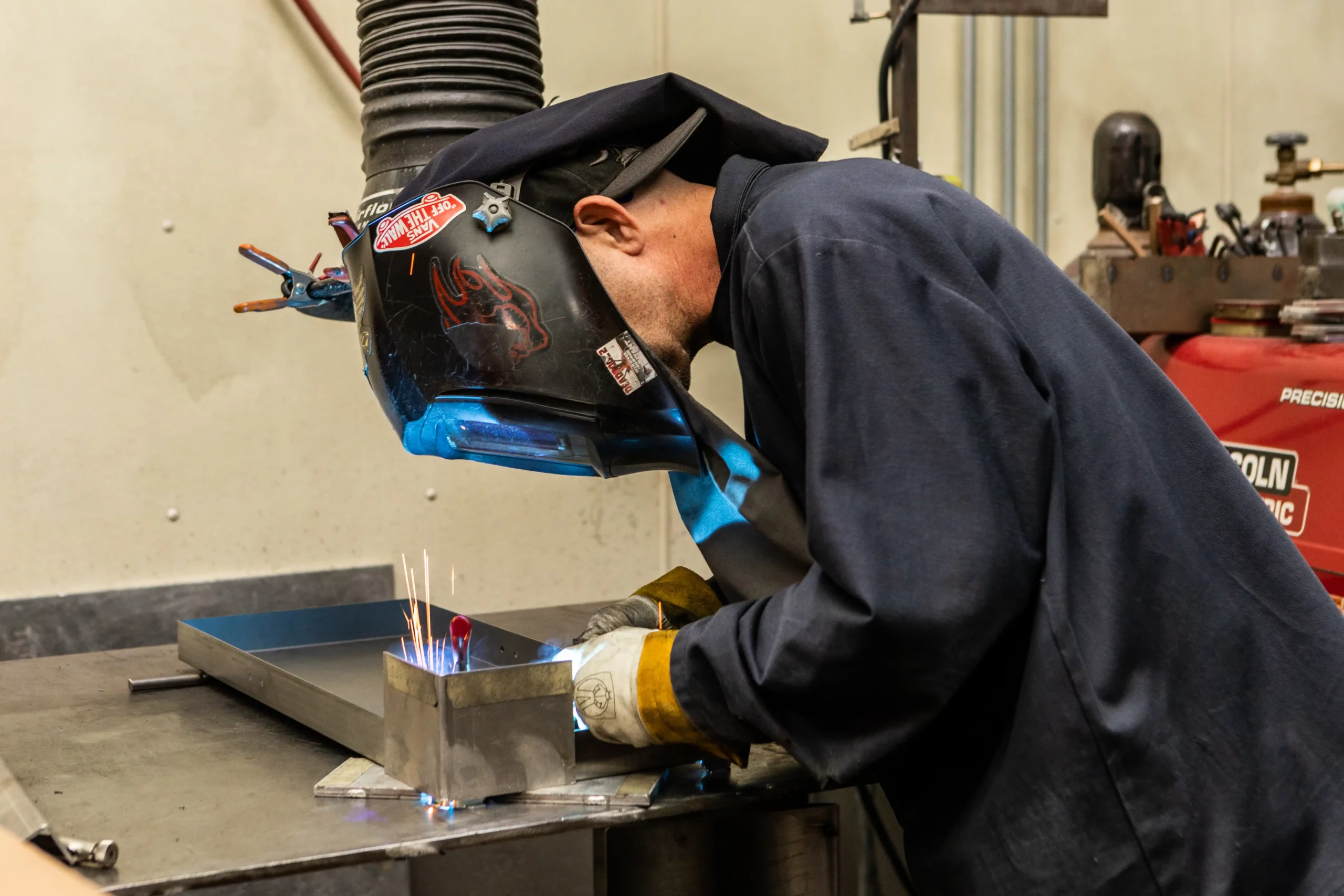Advanced weld correction methods from Belgrade Welding professionals
Wiki Article
Typical Welding Repair Issues and Exactly How to Address Them Efficiently
Welding repair services usually encounter a series of issues that can jeopardize the honesty of the end product. Usual problems include inadequate infiltration, porosity, and imbalance, to name a few. Each problem presents unique challenges that require specific strategies for resolution. Understanding these concerns is necessary for welders intending to enhance their outcomes and abilities. This conversation will discover these common welding repair service concerns and effective techniques to resolve them.Poor Infiltration
Poor penetration takes place when the weld steel fails to fully fuse with the base product, leading to weak joints and potential structural failings. This problem often originates from not enough warm input, wrong electrode angle, or inappropriate welding rate. Welders might run into insufficient infiltration as a result of a miscalculation of the needed specifications for a certain material density or kind. Additionally, contamination on the base product's surface area can impede effective bonding, intensifying the problem. To resolve poor infiltration, welders need to assure appropriate settings on their devices and maintain a clean job surface. Normal evaluation of welds is advised to recognize any kind of shortages early, permitting prompt improvements and the prevention of jeopardized structural integrity in bonded settings up.Porosity
Porosity is a common flaw in bonded joints that materializes as little gas bubbles entraped within the weld metal. This issue can jeopardize the integrity of the weld, bring about minimized toughness and prospective failing under tension. Montana Mobile Welding and Repair Fabrication. Porosity generally emerges from contamination, moisture, or incorrect welding methods, which allow gases to leave right into the liquified weld swimming pool. To deal with porosity, welders should ensure proper surface area preparation, keep a clean workplace, and make use of suitable welding criteria. In addition, selecting the best filler product and securing gas can minimize gas entrapment. Normal examination and testing of welds can assist recognize porosity early, assuring prompt rehabilitative activities are taken, consequently maintaining the top quality and dependability of the welded structureMisalignment
Imbalance in welding can arise from different elements, including incorrect configuration and thermal development. Comprehending the origin creates is important for effective resolution. Several correction methods are available to realign elements and ensure architectural integrity.Sources of Imbalance
Welding imbalance usually comes from a selection of underlying issues that can endanger structural integrity. One key reason is improper fit-up of parts prior to welding, which can lead to gaps and irregular surface areas. Variants in thermal growth during the welding procedure can likewise cause distortion, especially if the products being signed up with have various coefficients of growth. Additionally, poor clamping and fixturing might fall short to hold elements securely in location, resulting in motion throughout welding. Improperly maintained devices, including welding equipments and devices, may introduce disparities in the weld bead, additional adding to misalignment. Operator mistake, stemming from insufficient training or experience, can likewise play a significant function in developing misaligned welds.
Improvement Techniques Offered
Dealing with misalignment efficiently calls for a mix of rehabilitative strategies customized to the details concerns at hand. One common method is using jigs or components to hold components in the appropriate setting throughout welding, making sure regular placement. Additionally, pre-heating the products can help in reducing distortion and enhance fit-up. For considerable imbalance, mechanical realignment methods, such as utilizing hydraulic jacks or clamps, can be employed to remedy the setting prior to welding. Post-weld warm therapy may also be necessary to ease stresses triggered by imbalance. Finally, mindful assessment and change throughout the setup phase can avoid imbalance problems from ending up being significant issues, advertising a smoother welding procedure and enhancing total architectural honesty.Distortion
Distortion is a typical obstacle in welding that can develop from various aspects, consisting of irregular heating & cooling. Recognizing the root causes of distortion is vital for implementing reliable avoidance methods. Addressing this issue not only boosts structural stability yet additionally boosts the overall high quality of the weld.Reasons for Distortion
When subjected to the extreme warmth of welding, materials typically undergo changes that can cause distortion. This phenomenon primarily occurs from thermal development and contraction during the welding process. As the weld area heats up, the product increases; upon cooling, it acquires, which can produce interior anxieties. On top of that, irregular heating across a workpiece can intensify these anxieties, causing warping or flexing. The type of material additionally plays a considerable duty; metals with varying thermal conductivity and coefficients of expansion may react Visit This Link differently, leading to uncertain distortions. Inadequate joint design and insufficient fixturing can add to imbalance throughout welding, raising the probability of distortion. Understanding these reasons is crucial for effective welding fixing and prevention methods.Prevention Techniques
Effective avoidance methods for distortion during welding concentrate on controlling heat input and making certain correct joint style. Maintaining a regular warm input aids to reduce thermal growth and contraction, which can lead to distortion. Using strategies such as preheating the workpiece can also decrease the temperature level gradient, advertising uniform home heating. Furthermore, selecting suitable joint designs, such as T-joints or lap joints, can boost stability and reduce anxiety concentrations. Carrying out proper fixturing to protect the workpieces in position further aids in preserving positioning throughout the welding process. Staggered welding sequences can disperse heat a lot more uniformly, preventing local distortion. By applying these approaches, welders can considerably decrease the chance of distortion and improve the total top quality of their welds.Fracturing
Cracking is a common concern encountered in welding fixings, typically arising from numerous aspects such as improper cooling rates, product choice, or poor joint prep work. The event of splits can substantially endanger the stability of the weld, causing prospective failures throughout procedure. To address this problem, welders should initially evaluate the origin causes, making sure that products work and suitably chosen for the particular application. Furthermore, managing the air conditioning price throughout the welding procedure is vital; quick cooling can generate stress and anxiety and bring about fracturing. Proper joint design and preparation also contribute to decreasing the danger. Executing these approaches can improve weld top quality and longevity, inevitably reducing the likelihood of fracturing in ended up weldments.
Incomplete Blend
A significant problem in welding repair services is insufficient blend, which happens when the weld steel does not effectively bond with the base material or previous weld passes - Montana Mobile Welding and Repair. This defect can cause weak points in the joint, possibly endangering her comment is here the honesty of the welded framework. Factors contributing to incomplete blend consist of not enough heat input, inappropriate welding technique, and contamination of the surfaces being signed up with. To resolve this problem properly, welders should assure appropriate pre-weld cleansing and surface area preparation, along with adjust their welding criteria to achieve appropriate infiltration and combination. Regular examination throughout the welding procedure can additionally aid determine incomplete fusion early, permitting timely rehabilitative actions to enhance the overall high quality of the weldOverheating
While welding repair services can improve structural honesty, overheating presents a significant obstacle that can bring about material deterioration. Extreme warm throughout welding can modify the mechanical residential properties of metals, resulting in decreased strength, enhanced brittleness, and warping. This phenomenon is specifically critical in high-stress applications where architectural integrity is critical. Identifying getting too hot can involve visual examinations for discoloration or distortion, as well as checking temperature during the welding process. To minimize the dangers connected with getting too hot, welders ought to employ suitable techniques, such as controlling warm input, adjusting travel rate, and utilizing suitable filler materials. In addition, executing pre- and post-weld heat treatments can aid recover material buildings and boost the total high quality of the fixing, making sure lasting performance and safety and security.Regularly Asked Inquiries
What Are the Common Indicators of a Welding Defect?

Just How Can I Evaluate My Welds for Top quality?
To examine welds for top quality, one can utilize visual examinations, ultrasonic testing, and radiographic approaches. Each method assures structural honesty, recognizes issues, and validates adherence to specified requirements, eventually improving the integrity of the welded joints.What Safety and security Precautions Should I Take While Welding?
When welding, one should prioritize safety by using ideal personal safety equipment, making certain correct ventilation, protecting flammable products away, keeping a tidy work space, and knowing surroundings to protect against injuries and mishaps.Can I Fix a Weld Without Remodeling the Entire Joint?
Repairing a weld without renovating the entire joint is feasible, depending on the damage (Belgrade). Strategies such as grinding, including filler material, or making use of a welding procedure can efficiently resolve specific imperfections while protecting the surrounding structureWhat Equipment Are Important for Reliable Welding Fixes?
Vital devices for efficient welding repair services consist of a welding machine, cable brush, mill, safety equipment, clamps, and filler products. Each tool plays an essential duty in guaranteeing quality and security during the repair flux core welding service process. Porosity typically occurs from contamination, dampness, or incorrect welding techniques, which permit gases to get away right into the molten weld pool. Inadequately maintained devices, including welding equipments and tools, may introduce incongruities in the weld bead, further adding to misalignment. When subjected to the intense heat of welding, products typically go through changes that can lead to distortion. Breaking is a typical issue run into in welding fixings, frequently resulting from different variables such as improper air conditioning prices, product choice, or insufficient joint preparation. A significant issue in welding repair work is incomplete blend, which takes place when the weld metal does not adequately bond with the base product or previous weld passes.Report this wiki page